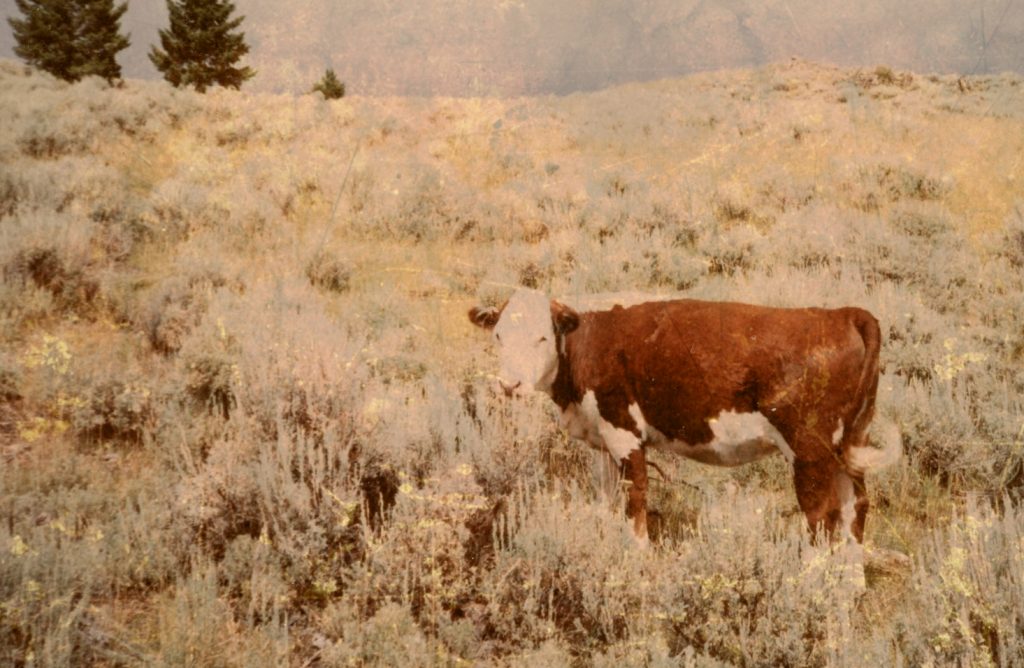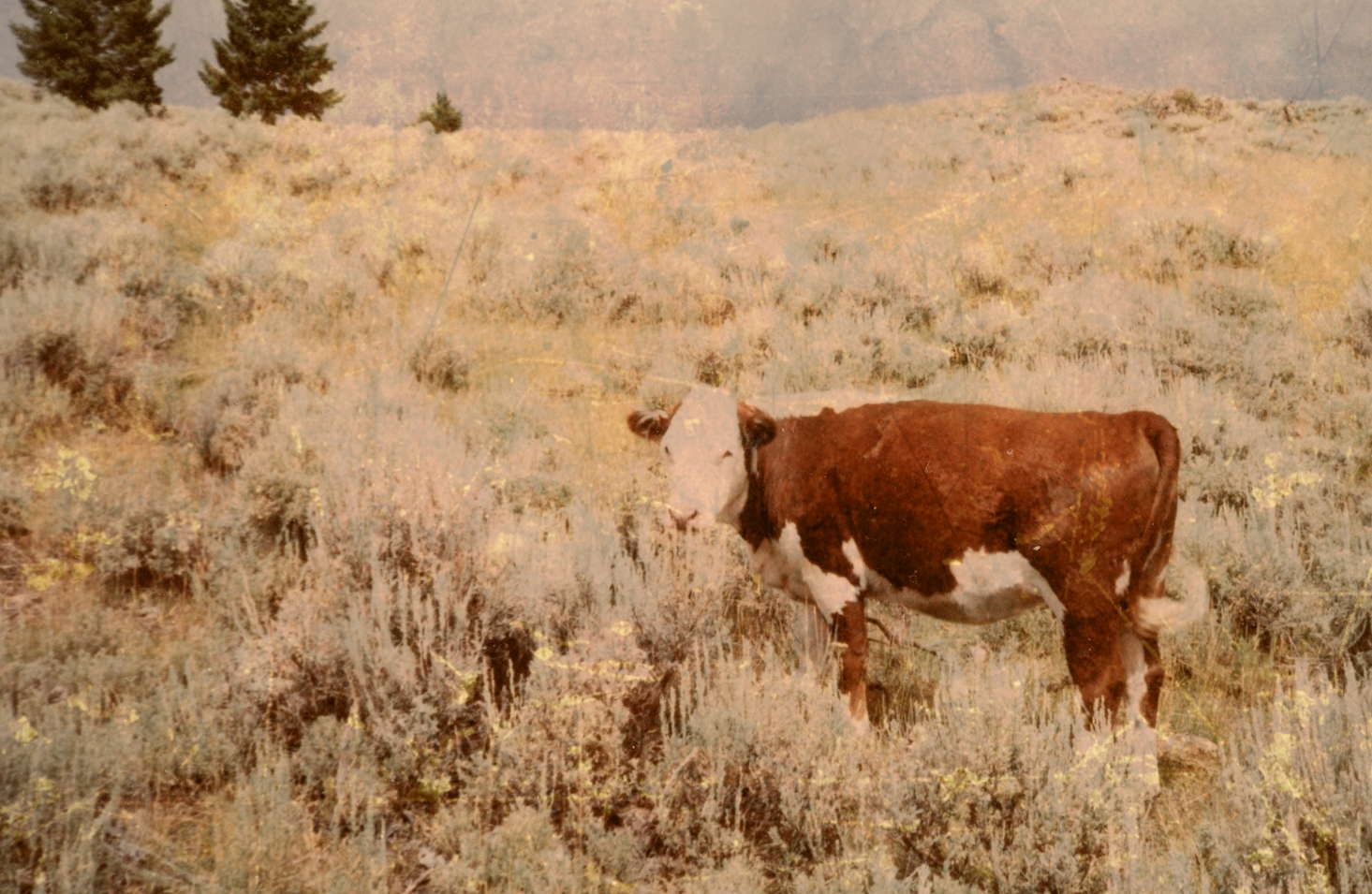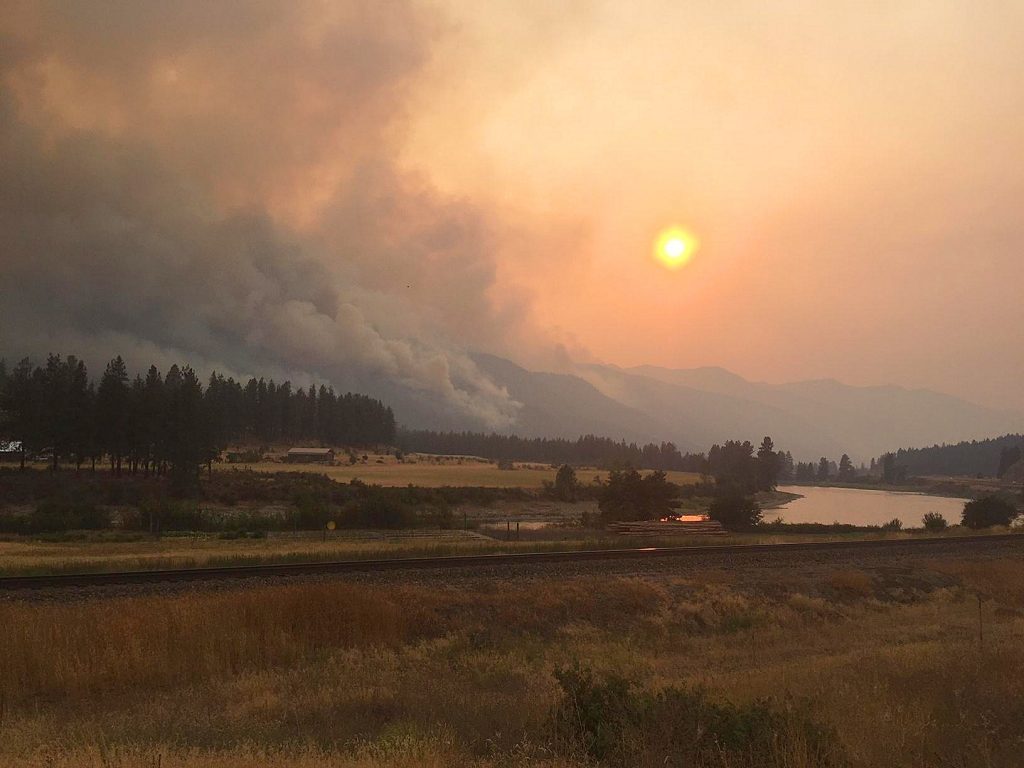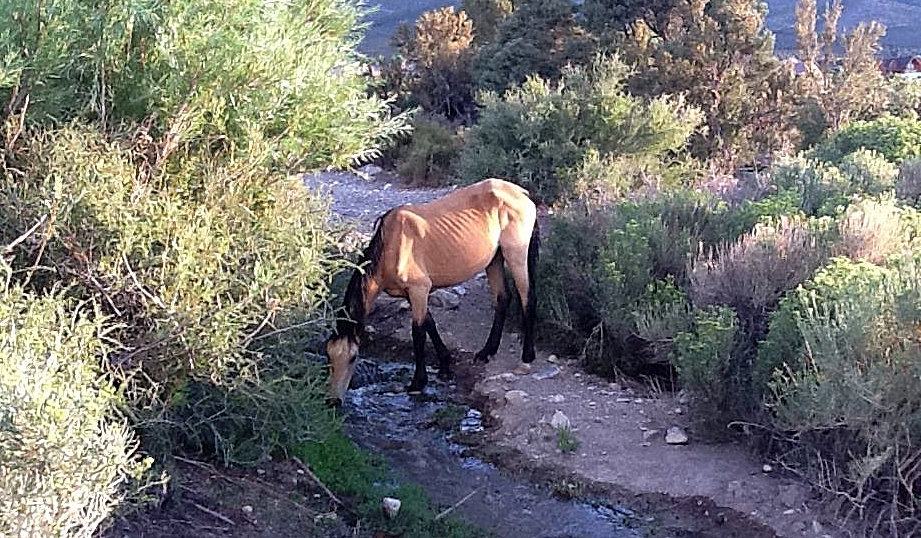From Preference Rights to Grazing Allotments:
Why Ranchers Own their Allotments
By Angus McIntosh PhD
Director Natural Resource Law & Policy Research
Land and Water USA Foundation
There are a lot of US Supreme Court decisions on the subject of “pioneer rights”, or settlers’ rights of “possession” or “occupancy” and “use”. The case that specifically refers to “pioneer rights” is Lamb v Davenport, 85 US 307 (1873).
Arguello v United States, 59 US 539 (1855), refers to a “cattle range” held in possession for 50 years (from prior to the Mexican cession to the US) as sufficient evidence of ownership. Essentially, pioneer rights are equivalent to “possessory” or “occupancy” rights that typically have the sanction of State or Territorial legislation, or; local laws, customs and decisions of the courts; or “aboriginal” title” or “possessory” or “occupancy” rights dating from a time prior to US acquisition through “treaty” (ie. Gudalupe-Hidalgo, 1848, or the Oregon-Northwest Treaty with Great Britain, 1846). This same possessory or occupancy right of “actual settlers” gives the settler a “color of title” which has been referred to as the “preference” right. The preference is the preferred right to acquire the government’s “legal title” when the land occupied or in the possession and use of the pioneer is eventually opened to settlement. (See Frisbie v Whitney, 76 US 187 (1869)). This pioneer right of possession and preference gives the occupant the right to sell his improvements as well as his possessory title, and such ownership will “relate back” to the first pioneer’s date of settlement.
This is important when you talk about establishing senior water rights and “land use rights” that predate later wildlife, fish, or environmental statutes. The Supreme Court has held that this pioneer/possessory right or title is good against all the world, except the United States as the actual legal title owner. However, once the United States Congress by positive legislation recognizes, confirms, or sanctions a “use,” or grants a right or title, then it is no longer a mere preference or possession. Once recognized or granted to a settler by an Act of Congress, that right could not be defeated by an employee of the Executive Branch (i.e. Interior or Agriculture) who failed to perform their duty to survey and record the settler’s claim, (Shaw v Kellogg, 170 US 312 (1898).
Regarding stockraising by bona fide settlers on “public lands” prior to passage of the Grazing Act of March 3, 1875 (18 Stat 481), stockgrazing was merely at the sufferance or tacit consent of Congress under a color of title based on State/Territorial “range” laws. While this “possessory/ preference” right was good against all others, it was not good against the United States as legal title owner until validated by, or properly initiated under, an Act of Congress (Frisbie v Whitney, 76 US 187 (1869) and The Yosemite Valley Case, 82 US 77 (1872)).
However, after passage of the Grazing Act of 1875, Congress validated the right of settlers to “graze” cattle, horses and other stock animals (even to the point of “destroying grass and trees”), on any land open to settlement under the homestead, preemption, or mineral land laws. Of course this was often necessary in order to improve pasture or plant crops. By the Act of July 26, 1866 (14 Stat 253) Congress had already recognized, sanctioned and confirmed ranch settler’s stockwater rights and stocktrail (“highway”) right-of-ways. Therefore, when land in the actual possession of a bona fide settler as a “range” was later incorporated into a federal military reservation, the ranch settler not only owned stockwater rights and stocktrail ROWs, but, had the “preference” right over all others to be “granted the privilege” to continue “grazing cattle, horses, sheep and other stock animals” (Act of 1884, 23 Stat 103).
Additionally, when the reservation was no longer needed for military purposes, any actual settler (if still in possession) had the preference right to acquire title through the homestead laws or by purchase (Act of 1884, supra).
A short list of key decisions pertaining to this principle of “preference/possessory rights” related to “range” rights would be:
Arguello v US, 59 US 539 (1855)
50 yrs possession of cattle range under color of title gives title good against the United States government.
Frisbie v Whitney, 76 US 187 (1869)
Possession and improvement gives a settler a preference right to acquire title, which right land department officers are bound to protect.
Lamb v Davenport, 85 US 307 (1872)
Possessory rights and improvements could be sold even before any act of congress was passed allowing for disposal of that land.
Atherton v Fowler, 96 US 513 (1877)
Possession of an enclosed range and improvement of the forage was sufficient to establish possession and defeat later homestead claimants even if the enclosed land far exceeded the amount allowed under the homestead laws. The first settler was entitled to compensation as owner of the forage cut and removed by a second fraudulent claimant even if the legal title to the underlying land was still in the US.
Hosmer v Wallace, 97 US 575 (1879)
Where a settler was in possession or occupancy of thousands of acres as a stock ranch the land was segregated from appropriation by later settlers.
Griffith v Godey,113 US 89 (1885)
A settler in possession of thousands of acres of a cattle range, controlled by his ownership of water rights in key springs and of a homestead was the owner of a property right in the range.
Wilson v. Everett, 139 U.S. 616 (1891)
An expansive cattle range on the Republican river and its tributaries covering portions of Colorado, Nebraska, and Kansas was a possessory private property interest subject to recovery of damages.
Cameron v United States, 148 US 301 (1893),
Possession and improvement of thousands of acres as a cattle range gave color of title or a claim that removed the land from the class of “public lands” and therefore the enclosure of such was not a violation of the Unlawful Occupancy act of 1885.
Lonergan v. Buford, 148 US 581 (1893),
An expansive cattle range together with all water rights, fences and improvements thereon covering portions of Utah and Idaho was possessory private property capable of sale and subject to contract enforcement.
Swan Land and Cattle Co. v Frank, 148 US 603 (1893),
A large cattle range in Wyoming together with water rights, and improvements were possessory property rights subject to actions at law for recovery.
Catholic Bishop v Gibbon, 158 US 155 (1895)
By treaty possessory rights of settlers in British Oregon shall be respected.
Grayson v Lynch, 163 US 468 (1896)
A cattle range suitable for pasturage, watering, and raising cattle in New Mexico was a property right such that the owner could recover for damages caused by diseased cattle being driven across his range.
Tarpey v Madsen, 178 US 215 (1900)
Possession implies improvement and settlement with intent to acquire title when land is opened for disposal, but cabins, corrals improvements for hunting, trapping, etc. also allowed.
Ward v Sherman, 192 U.S.168 (1904)
A large cattle range, cattle then on the range, and the desert wells were all private property subject to sale and mortgage.
Bacon v Walker, 204 US 311 & Bown v Walling, 204 US 320 (1907)
Idaho range laws recognizing settler’s right to exclusively graze lands within two miles of their homestead did not infringe on United States’ underlying title.
St Paul M&M R Co v Donohue, 210 US 21 (1908)
All public lands were opened to settlement and entry after 1880 and a settlers’ improvements were sufficient notice of his claim to defeat later claimants.
Northern Pacific R Co v Trodick, 221 US 208 (1911)
Until a local land office was established and a survey conducted the rights of settlers in possession of public lands could not be defeated by either subsequent withdrawal or grants to third parties.
Curtin v Benson, 222 US 78 (1911)
Where a settler owned seven scattered parcels of land connected with 1866 Act rights-of-way, intermingled with 23,000 acres of range rights, before the United States included that land into a national park, the possessory range owner did not afterwards have to acquire a permit prior to using his property rights.
Under the Forest Reserve/Homestead Acts of 1891/1897 (26 Stat 1102/30 Stat 33) all land withdrawn as Forest Reserves that was occupied by “actual settlers” (possessory range rights), and was valuable for “agriculture” (stockraising), not only had “preference” rights attached to them, but also had a network of easements, water rights, Right Of Ways, and improvements that belonged to the bona fide settlers (Act of July 26, 1866 (14 Stat 253), Livestock Reservoir Site Act, 0f 1897 (29 Stat 484), and cases cited above).
The Act of 1880 had opened all the land in the West to settlement, and had recognized settlers’ improvements and possession were sufficient to put any later claimants on notice that the land was already occupied (Cox v Hart, 260 US 427 (1922).
The free Homestead Act of 1900, (31 Stat. 179), opened all agricultural public lands acquired by treaty to settlement and entry free of charge (except for filing fees).
In1902 Congress enacted the Reclamation Act (32 Stat 388), which altered the policy of granting specific acreage amounts of Desert Land (i.e.160, 320, 640, etc.) and adopted the “Unit policy” which instead granted to a homestead entryman an “amount of land sufficient for the support of a family”. The same policy was followed when Congress enacted the Forest Homestead Act of June 11,1906 (34 Stat. 233, 35 Stat. 554) which included a “preference” right for actual settlers to enter any number of 160 acre tracts up to the amount of their actual settlement. In1910, Congress authorized the granting of “allotments” to Indians “occupying, living on, or having improvements on” land within National Forests “more valuable for agricultural or grazing purposes than for timber” (36 Stat 863).
This was the law as it existed in 1912 when Congress amended the 1880 Act for Relief of Settlers (37 Stat. 267) and recognized a “preference right” of settlers to an ‘additional entry’ under the “enlarged homestead provisions” of the Desert Land Laws to claim an amount of land to the extent of their occupancy and possession as long as their boundaries were plainly marked.
In1916 (after 17 years of debate) Congress finally passed the only Homestead Act specific to livestock production, the Stock Raising Homestead Act. The intent of the SRHA was to make a permanent disposal of all the remaining approximately 600 million acres in the West “chiefly valuable for grazing and raising forage crops.”
(Stock-Raising Homesteads, 1916. House Rep. No.35. 64Th Cong., 1st Sess.) Section 10 of the SRHA provided for the withdrawal of 600 million acres under the 1910, Pickett Act for “classification” so the range could be surveyed, and allotted as “additional entries” under Section 8. Where an entryman had paid the required fees, made the required improvement and cultivation, and the size of the unit was determined and the plat returned, the entryman had done all required and the equitable title was vested in the entryman (Irwin v. Wright, 258 US 215 (1922)).
By an Act for the Relief of Settlers of March 4, 1923 (42 Stat 1445) Congress allowed settlers under previous homestead acts to convert their “original” or base property entries to either Desert Land (Enlarged) Homestead entries or to Stock-Raising Homestead Act entries in order to change their required “proofs” to $1.25/acre “improvements”.
See also the Act of June 6, 1924 amending the SRHA (43 Stat 469). Both the Desert Land (Enlarged) Homestead Acts and the Stock-Raising Homestead Act also allowed “preferential” or “preference” right “additional entries” to the extent of the settler’s actual possession (where his boundaries were clearly marked), of an amount of land “sufficient for the support of a family”
The Pickett Act in conformance with Section 10 of the SRHA provided authority for the creation of grazing Districts outside of National Forests, and the President began creating Grazing Districts in 1928. The Taylor Grazing Act provided for administration of Grazing Districts and provided a formalized process for establishing them. The TGA did not affect valid existing rights, and allowed for ranchers to complete their improvement requirements under section 8 of the SRHA.
This classification, adjudication and surveying was accomplished between 1916 and 1950. The SRHA Act was the grant from Congress, the survey of the ranges into allotments the recording of the maps, improvement of the additional entry to an amount equal to $1.25 per acre, and return of the maps to the ranchers in possession was all that was required by the statute, (see Sellas v Kirk, 200F.2d 217 cert. Denied 345 US 940 (1953). See also Shaw v Kellogg, 170 US 312 (1898).
Some bureaucrats would have people believe that somehow the Federal Land Management and Policy Act (FLPMA) of 1976 somehow changed 130 years of Congressional grants and property rights. FLPMA itself contains 2 pages of “savings provisions” intended to “grandfather” in place all prior existing rights. FLPMA specifically states “All actions by the Secretary [of Interior] concerned under this Act are subject to valid existing rights”. If it was true that FLPMA was intended to extinguish all of ranchers (and anyone else’s) property rights, then Congress the next year would not have provided for the protection of ranchers’ property rights under the Surface Mining Reclamation Act of 1977. (91 Stat. 524, Sec. 714, 715 and 717).
An example of prior existing rights is the Malheur National Wildlife Refuge. In 1908 President Roosevelt, established by presidential proclamation a Bird Reserve (subject to prior existing rights). Thirty four years later the Ninth Circuit Court ruled in United States v. Otley, 127 F2d 988 (1942), that not only did the prior existing ranchers living adjacent to Malheur Lake have the absolute right to graze and cut hay within the reserve, but actually owned half of Malheur Lake itself. In 1942 the government paid for the right to construct roads, phone lines, plant trees, build fire towers, and build water control dams and structures. For the next thirty years these ranchers continued to graze cattle and cut hay. This all changed with a change in management at the Reserve/Refuge in the 1970’s. I’m curious as to exactly what was in the original 1942 purchase agreements. What rights were reserved in those agreements? Why is this new generation of Feds trying to force out the Hammonds by ignoring 18 USC 1857 that exempts “allotment owners” from the criminal arson provisions? The biggest question I have is why do the people of Harney County believe anything the Federal employees tell them when there is a proven history of them lying to ranchers about prior existing rights (U.S. v Otley, 1942)?
Angus McIntosh, PhD

Angus McIntosh is the Executive Director of the Range Allotment Owners Association. He worked for Western Fuels Energy from 2008 through the end of 2013 and then accepted the position of Director Natural Resources Law & Policy Research with Land And Water USA Foundation. Beginning in August of 2014 he taught Agriculture classes at the local High School and was an adviser to the Future Farmers of America kids. He an Adjunct Professor of Agriculture at Texas A&M University and teaches online courses.





I have only had time to read the Arguello decision, but your claim that this case finds that “50 yrs possession of cattle range under color of title gives title good against the United States government”, is completely wrong. This case only deals with the 2 issues. The first of whether Arguello’s descendants, having accepted a title with distinct known boundaries and a supposed understanding that the boundaries were larger, can receive title to the larger area was decided AGAINST Arguelo. The second issue of whether a grant by a governor serving under the Spanish King was valid to give title at all to any land was settled in Arguelo’s favor. NONE of this case has to do with range rights, color of title by use, or grazing rights as ALL the land in question was either deeded , or claimed to have been deeded, by the Governor at the time of its being acquired. Are you claiming that ranchers have been given a deed? Possibly most, if not all, of your adherents are not sufficiently educated to actually understand what was written in these cases. But you are wrong in your assertion that this case backs up any claims of range rights. I will read the other cases you have mentioned when I have the time.
Obviously, you do not understand the Bundy way of interpreting the law. You look for some words that sound like what you would like the law to be, and then that is the way the law is. Did the Bundys adversely possess the land in NV. Most would say that paying grazing fees for 40 years would kind of wreck that type of claim. Did they have a claim for adverse possession in Or. Well they were a mere 19 years and 324 days short.
Obviously you are a Twit not a psychologist. …and a mighty egotistical mind reader as well. If you want to know how the Bundys interpret the law you might ask them…or at least read and view the plethora of information they have public ally announced.
I am responding to the application of one of the cases listed to the argument of what that case proves. My answer has nothing to do with the Bundys, though they are claiming to own rights. My focus was narrow and focused on the first case mentioned.
I will pray for the ranchers and their families.
Hi admin, i must say you have high quality posts here.
Your website should go viral. You need initial traffic only.
How to get it? Search for: Mertiso’s tips go viral